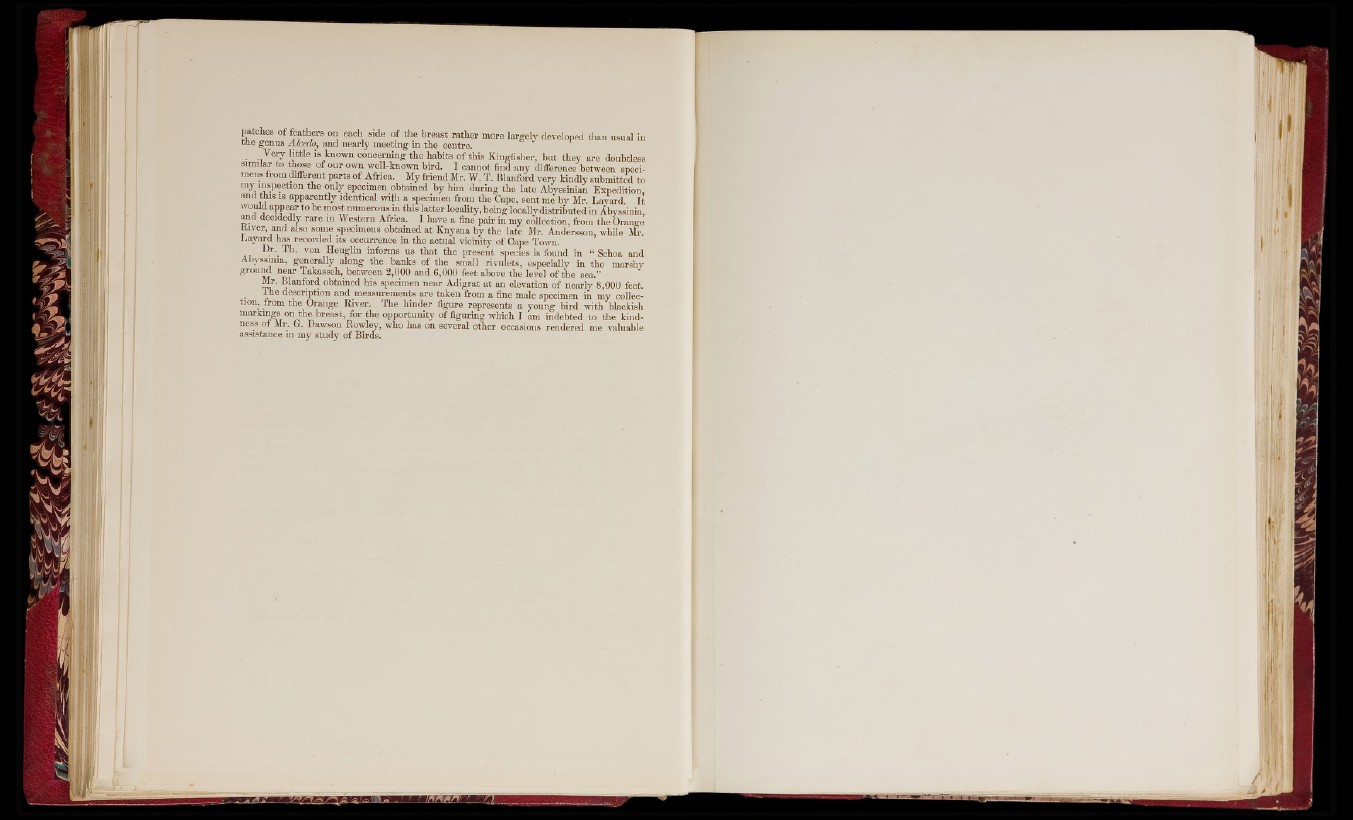
™ re»!®“ *.™*»®® “ °9, and n e a rly meetin g in th e centre. ®® ' “ -s^'y f t» " "®""1 i
^ V e ry little is known concerning th e h abits o f this Kingfisher, but th ey a re doubtless
sim ila r to those o f o u r own well-known bird. I cannot find any difference between speci-
mens from i f f e r e n t p ^ t s o f A frica. My friend Mr. W. T. Blanford v e ry kindly submitted to
my in sp e c tio n th e o n ly specimen obtained b y him d u rin g th e late Abyssinian Expedition,
and th is is a p p a ren tly identical with a specimen from th e Cape, sent m e by Mr. Layard. I t
would ap p e ar to be most num erous in th is la tte r locality, being locally distributed in Abyssinia,
and decidedly r a r e m W e ste rn Africa. I bave a fine pair in m y collection, fi-om the O range
River, and also some specimens obtained a t Knysiia b ) th e la te Mrt TldCTs'son, "whiTrMV
- I T . ‘y S71X14. .UJ tilC lUltC lU l . /1.I1U
n n rn p d ib.ci in i l i o oofi- io) TriirfriF-,. -.r n 'u _____
i^ayard has recorded its occurrence in th e actual vicinity o f C ape Town.
Dr. Th. von Heuglin informs u s th a t th e p resen t species is foimd in “ Schoa and
Abyssmia, gen e ra lly along th e banks o f th e small riv u le ts, especially in th e marshy
g ro u n d n e a r Takasseh, between 2,000 and 6,000 feet above the level o f th e sea.”
Mr. Blanford obtained h is specimen n e a r A d ig ra t a t an elevation o f nearly 8,000 feet,
i h e description and measurements ai-e tak en from a fine male specimen in my collectio
n irom the Orange River. The h in d e r figure represents a y o u n g b ird r i t h blackish
m arkings on th e b re a s t, for th e o p p o rtu n ity o f figuring which I am indebted to th e k indness
oi Mr. G. Dawson Rowley, who has on several o th er occasions rendered me valuable
assistance in my stu d y o f B irds.
i *)
i / j '